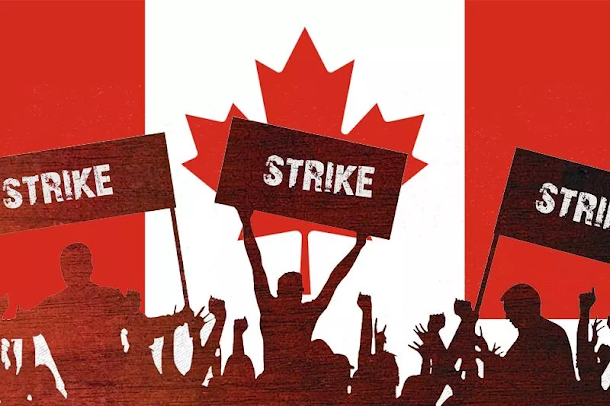Canada is set to witness a major labor strike, as 150,000 government workers prepare to walk out of their jobs over a pay increase.
This mass walkout has been brewing for a while, and it is expected to impact several essential services across the country. In this article, we'll take a closer look at what's behind this strike and what Canadians can expect in the coming days.
The root of the dispute is simple: the Canadian government has refused to give a pay increase to its workers, arguing that it needs to keep a tight rein on public spending. In contrast, the union representing these workers, the Public Service Alliance of Canada (PSAC), is pushing for higher wages that reflect the cost of living in Canada. Negotiations have been ongoing for several months, but no resolution has been reached, prompting the union to call for this mass strike.
The impact of this strike is expected to be significant, with essential services like airports, mail delivery, border security, and social security offices likely to be disrupted. This could mean delays in mail delivery, longer wait times at border crossings, and difficulties for people who rely on government benefits to make ends meet. It's worth noting that not all government workers will be walking out - some will still be required to provide essential services - but the sheer number of workers involved means that the impact is likely to be felt across the country.
So what can Canadians expect in the coming days? The strike is expected to begin on April 22, 2023, and could last for an indefinite period, depending on how negotiations progress. The Canadian government has already expressed its disappointment at the union's decision to strike, and has warned that it will take measures to mitigate the impact on essential services. The PSAC, on the other hand, has urged the government to return to the negotiating table and find a resolution that satisfies both parties.
The strike is likely to be a major test for the Canadian government, which has already been grappling with a range of challenges, including the ongoing COVID-19 pandemic and a sluggish economic recovery. It remains to be seen whether the government and the PSAC can find a way to resolve this dispute before it causes too much disruption, but one thing is clear: Canadians are likely to feel the impact of this labor strike for some time to come.
In conclusion, the mass strike by 150,000 government workers in Canada is a significant event that will have wide-ranging consequences for essential services and the people who rely on them. While the dispute over pay may seem straightforward, the impact of this strike is likely to be felt across the country, and could exacerbate existing challenges facing the Canadian government. As negotiations continue, Canadians will be watching closely to see how this situation develops.



Comments
Post a Comment